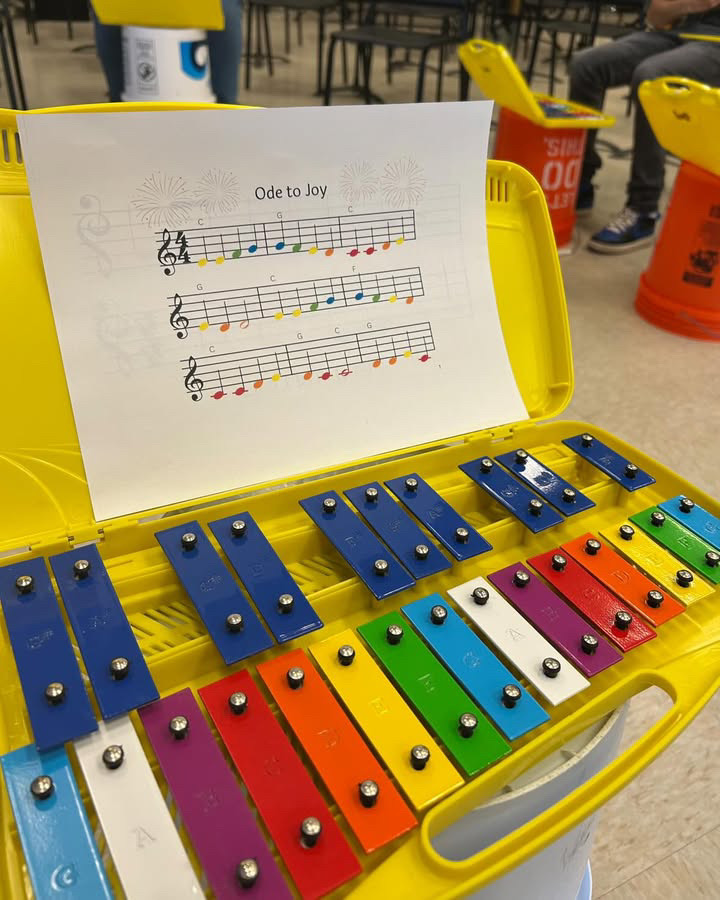In March 2024, MCPS joined the National School Lunch Program (NSLP) and the district stripped four MCPS elementary schools of their Title I status after it changed how school poverty rates were calculated. Qualification for funding now depends on the number of students receiving direct aid from the federal government, rather than FARMS data.
Title I of the Elementary and Secondary Education Act provides all children with the opportunity to receive fair, equitable and high-quality education, working to close educational achievement gaps. It supports all aspects within a school, from social-emotional learning to additional teachers and instructional materials. Additionally, the funds support after-school and summer programs to extend the regular school curriculum and provide extended periods of childcare.
Historically, the number of students receiving Free and Reduced-Price Meals (FARMS) has determined Title I funding. The main difference between NSLP and FARMS is that they calculate eligibility differently. NSLP uses data from the Federal Poverty Level issued by the Department of Health and Human Services. Consequently, new MCPS poverty level calculations align with federal classifications, which often ignore important variables.
FARMS takes a broader approach, looking at household size and income and considering the amount of aid students receive from federal and state assistance programs, which would also show a need for financial relief. Those programs include the Supplemental Nutrition Assistance Program, Temporary Cash Assistance and Medicaid benefits. Additionally, FARMS data includes more undocumented immigrants as they are less likely to submit federal forms such as those used for NSLP. However, many schools don’t accept FARMS applications if they feel overwhelmed by the number of applications, causing a lack of accurate data on the poverty levels of schools that would be used to determine Title I funding. Although the FARMS system isn’t perfect, it uses a wider breadth of data which is more beneficial when representing the total population.
The federal government reserves a portion of the federal education budget for Title I, specifically, $20.5 billion for the 2024-2025 school year. The district then allocates that funding based on individual schools’ poverty rates, as determined by the NSLP.
According to the United States Department of Education, the federal government distributes Title I aid based on mathematical formulas that consider the number of children eligible for support and the state cost of education per student. The federal government also determines the amount of money counties receive in Title I aid. Based on certain criteria, states can also reject district designations made by the federal recommendation. This means the county almost entirely controls the decision to change the allocation criteria.
According to WASU9, for the 2024-2025 school year, MCPS cut funding to four elementary schools — Viers Mill, Oak View, Brookhaven and Strathmore — and reallocated it to other schools deemed to be in greater need of the funds. These cuts do not indicate a drop in the MCPS Title I budget but a change in the poverty levels of individual schools.
While the decision may seem warranted, it is more harmful to the schools that lost the funding than beneficial to those that gained it. As a result of changes, those four schools’ funding plummeted, forcing them to fire several teachers at the end of the 2023-2024 school year. Six elementary schools gained Title I status with the change – East Silver Spring, S. Christa McAuliffe, Waters Landing, Benjamin Banneker, Meadow Hall and Strawberry Knoll. Astonishingly, East Silver Spring Elementary School’s poverty level jumped 61.79% to 80.15% — an 18.36% increase in one year.
The ability of one school’s poverty level to jump over 15% in one year after the county changed its criteria for analyzing poverty levels raises many questions about the calculations, before the FARMS system can be considered superior to the NSLP those questions must be addressed. However, given that FARMS accounts for a larger number of individuals and prevents the exclusion of undocumented immigrants, it remains the better option despite its issues.

















